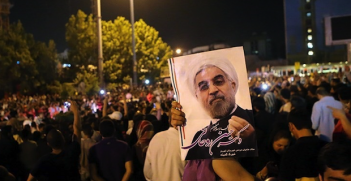New Opportunities for Enhanced Security Cooperation Between Australia and India

The Australia-India relationship has the potential to increase security in the Indian Ocean. Enhanced security cooperation was on the agenda for a dialogue the Australian Institute of International Affairs is conducted with the Indian Council of World Affairs in New Delhi last week.
India-Australia relations, including security relations, have moved light years ahead over the last few years. Issues that may have once been regarded as controversial have now become simply matters to be dealt with in the ordinary course. Uranium supply arrangements, for example, which once generated so much heat and emotion, are now being negotiated and resolved following normal processes.
Prime Minister Modi’s visit to Australia last year was an important step in putting his political imprimatur on the relationship, which has further smoothed the way for enhanced defence and security cooperation. The new Framework for Security Cooperation, adopted in November 2014, provided more detail to existing areas of cooperation and new areas to be explored.
The AUSINDEX naval exercises conducted this month by the Indian and Australian navies in the Bay of Bengal were an important step forward in the defence relationship, being the first substantive bilateral naval exercises between India and Australia for at least 50 years. But we should be careful in allowing rhetoric to outrun the reality. The Indian navy currently conducts bilateral exercises or operations with some eight other nations and the Australian navy conducts bilateral exercises with many countries. Therefore, the AUSINDEX naval exercises merely fill an odd gap in the relationship between these two Indian Ocean neighbours. In fact we still have long way to go to give substance to the defence and security relationship.
There are three areas where defence and security cooperation between India and Australia could broaden.
New areas for bilateral defence cooperation
The Indian and Australian navies are at the forefront of defence cooperation between the two countries for obvious reasons. They are the two most powerful navies among Indian Ocean states and share security responsibilities across this vast ocean. Importantly, the Indian and Australian navies also share many traditions inherited from the Royal Navy, including a strong culture of cooperation and broad strategic outlooks. The navies will continue to be the lead agencies for defence cooperation between the two countries.
But we also need to think about opportunities for cooperation among the other armed services. Although they share many traditions, there are also some important differences between the Indian and Australian armies, including in their size and strategic focus, and this has previously constrained cooperation between them. There are still several areas where they can cooperate and learn from each other. India and Australia have long made significant contributions throughout the world in peacekeeping operations. India has contributed over 100,000 personnel to more than 40 UN peacekeeping operations, while Australia has contributed over 30,000 personnel to more than 100 peacekeeping operations, beginning with sending military observers to Indonesia in 1948. Both India and Australia operate centres to train their own and neighbours’ armies in the arts of peacekeeping. There is considerable scope for cooperation between the two militaries in working with each other and with neighbours throughout the Indian Ocean region in strengthening peacekeeping capabilities.
There are also opportunities for enhanced cooperation between air forces. Cooperation between them has been limited by different missions and different equipment. However, they will soon operate many common platforms, including P-8 Poseidon maritime reconnaissance aircraft, C-130 Hercules and C-17 Globemasters, as well as tankers and helicopters. These common platforms create considerable scope for cooperation in training, maintenance and doctrine.
Co-operation with partners across the Indo-Pacific
New strategic partnerships being developed or enhanced by India and Australia across the Indo-Pacific create many new opportunities for mini-lateral defence cooperation.
Some analysts have focused on the potential for enhanced defence cooperation among India, Japan, Australia and the US, including through the Malabar naval exercises. For several years these exercises have been held in a trilateral format between India, Japan and the US and there seems no reason why it should not also include Australia. The four countries (and Singapore) last participated in the Malabar naval exercises in 2007: but it generated some controversy and was not repeated because of objections from China. In retrospect that was an error and it is now clear that Australia and India should not allow their relationship to be determined or limited by any third country. Hopefully the next Malabar naval exercises will be a four-way event.
There is also considerable potential for the development of trilateral defence cooperation among India, Australia and Japan. This could perhaps include trilateral coastguard exercises perhaps building on the long-running India-Japan bilateral exercises.
Opportunities for maritime security cooperation in the Indian Ocean region
India and Australia are currently engaged in a historic exercise of region building in the Indian Ocean. This includes building regional institutions such as the Indian Ocean Rim Association (IORA) and the Indian Ocean Naval Symposium (IONS) to help create a regional identity among the many littoral states of the Indian Ocean.
In September, the Indian Ocean Dialogue in Perth brought together officials and experts from more than 20 Indian Ocean states to discuss maritime security related issues. There was considerable enthusiasm from all countries represented for greater maritime cooperation, particularly among coast guard agencies. Many Indian Ocean states look towards countries such as India and Australia for leadership in this area.
India sponsored the establishment of IONS in 2008, bringing together heads of navy and maritime security agencies of 26 members and observers. IONS is the first indigenous pan-Indian Ocean security forum and may evolve into an important mechanism for cooperation among regional navies. However, IONS also has its limitations. Navies by their nature are primarily concerned with “hard” security issues, which carries political sensitivities about deployment and cooperation. This is one reason why across the Indo-Pacific coast guard and similar maritime policing agencies are increasingly used to provide maritime security. The disputes among territorial claimants in the South China Sea are more frequently played out between “white” coast guard vessels than between “grey” naval vessels.
No mechanism or forum currently exists for cooperation among coastguard agencies in the Indian Ocean. The Heads of Asian Coast Guard Agencies Meeting (HACGAM) brings together coast guard agencies along the Asian littoral from Japan to Pakistan (and including Australia), but there is no forum that is open to all Indian Ocean states and focuses on maritime issues that are particular to the Indian Ocean. This creates an important opportunity for India and Australia to work together to establish an Indian Ocean-centred forum such as an Indian Ocean Coast Guard Symposium. Such a grouping could focus on maritime security issues such as maritime crime, illegal and unregulated fishing and search and rescue operations. This would be a significant addition to the region’s security architecture and, importantly, a symbol of India and Australia’s shared commitment to the security of the Indian Ocean.
Dr David Brewster is a Visiting Fellow of the Strategic and Defence Studies Centre, ANU College of Asia and the Pacific, at the Australian National University. This article was adapted from a speech Dr Brewster presented at the Bilateral Dialogue between the Australian Institute of International Affairs and the Indian Council on World Affairs, Delhi, on 15 September 2015. This article can be republished with attribution under a Creative Commons Licence.





